Downtown Dayton, despite all it has lost over the years, still maintains an enviable architectural legacy featuring a number of early office towers and other commercial structures built around the turn of the 20th century.
Many of these were named for people, including the Kuhns, Reibold, Conover, and Lindsey Buildings. But who are the individuals and families behind these names? We take a closer look in today’s article.
Kuhns Building
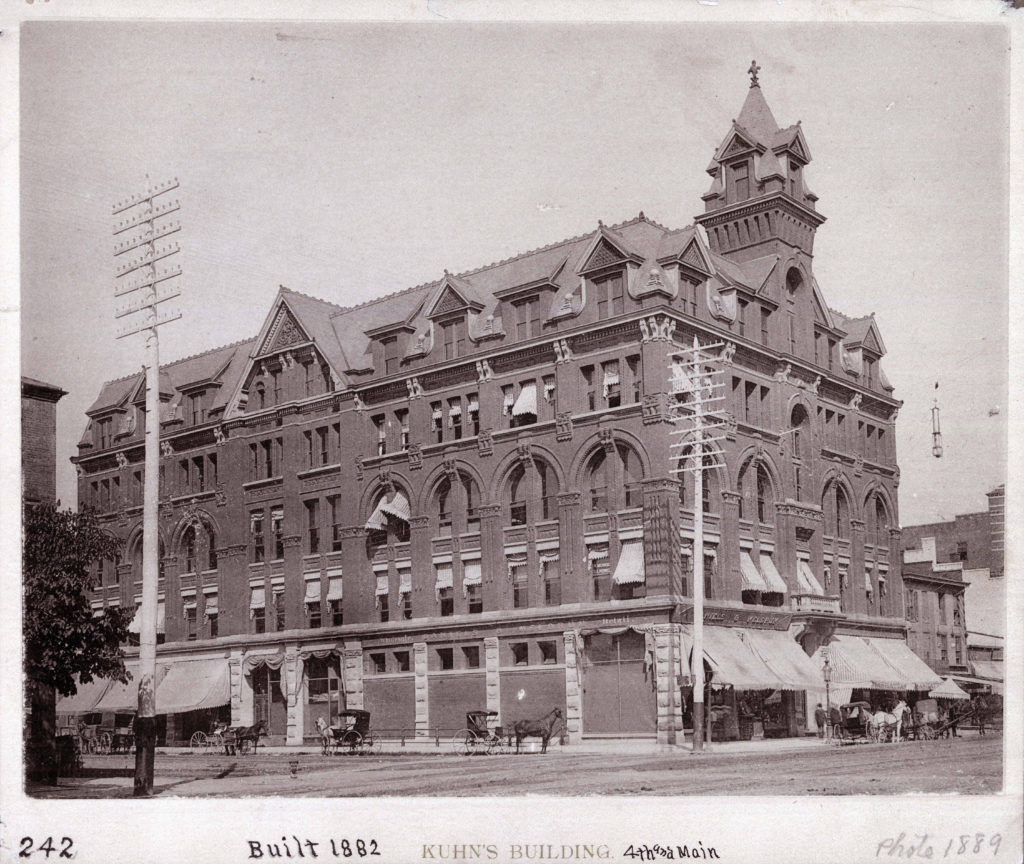
This 1882 commercial building is named for Benjamin Kuhns, a prominent Dayton industrialist. Kuhns was 30 years old in 1855 when he moved to Dayton from Lancaster, Pennsylvania. Over the next two decades, he made a name for himself in the business of agricultural equipment, taking over a small company and greatly expanding it into a leading firm. Later he was a primary founder of the Miami Valley Hospital and became known for his philanthropy.
The Romanesque Revival Kuhns Building, with its distinctive red brick, mansard roof, and rounded arches, was designed the the architectural firm of Peters and Burns. Many retail tenants occupied it over the years, including the Manhattan Clothing Store and Oleman’s Department Store. Its mail chute is said to the the first in an American office building.
Reibold Building
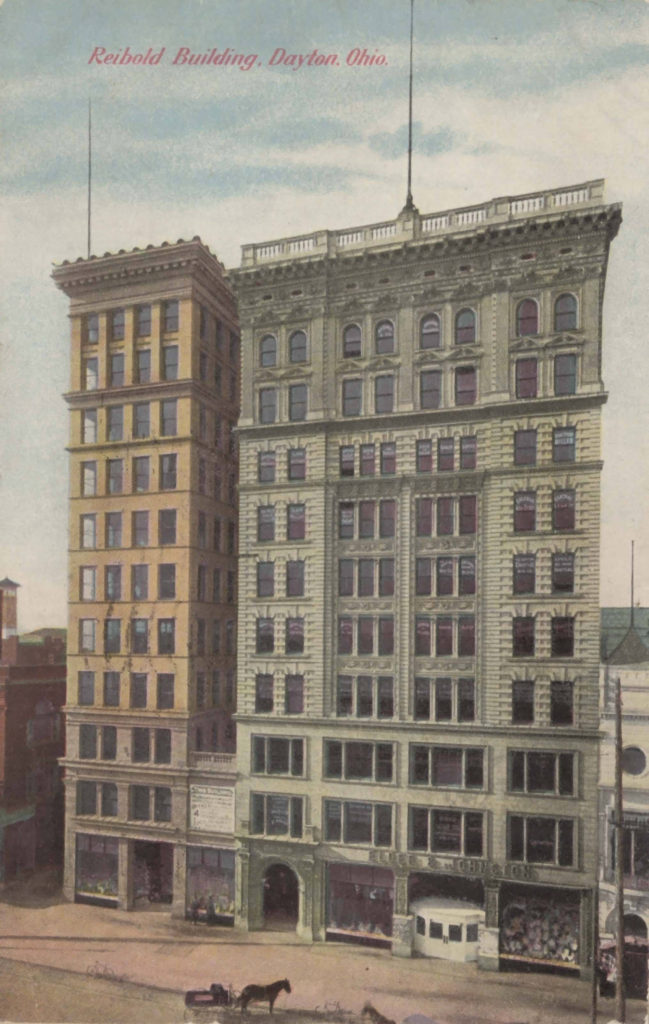
The Reibold Building at 4th and Main Streets is named for Louis Napoloeon Reibold.
Born in 1842 in Germany, Reibold came to the United States and became a developer of several buildings including the one that would bear his name.
He passed away in 1908 and is buried at Woodland Cemetery. His brother Frederick and nephew Louis S., both bankers, also became well-known around the Dayton area.
Noted architects Charles Insco Williams and the Peters, Burns and Pretzinger firm designed the Reibold Building. The first phase was completed in 1896, and it was the tallest structure in Dayton until 1904 when the first part of the Centre City Building was built.
The structure features four escalators from 1934 which were the first in Dayton to be installed by the Otis Elevator Company survive as rare examples from that era.
Its roof was also the site of a historic hot air balloon launch in 1909, when Luzern Custer set a record with his flight of 20 miles to Middletown in just one hour.
Conover Building
The structure at the SE corner of 3rd and Main has been replaced over time, but has kept the same name. It was named for blacksmith Obadiah Conover, who hailed from New Jersey.
In 1812, he came to Dayton and purchased this whole block directly from Daniel Cooper, and constructed both his house and blacksmith shop on the land soon after.
In addition to blacksmithing, Conover was engaged in wagon and plow manufacturing. Beyond his business pursuits, he was also well-known for his religious and Sunday-school work.
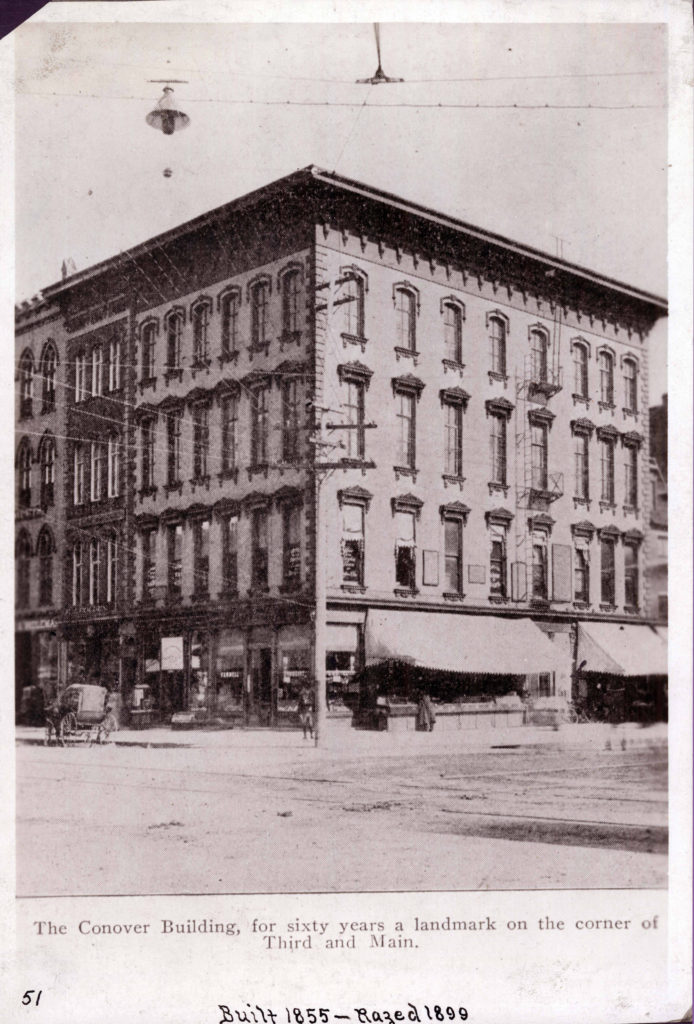
Later, around the turn of the century, the original building was demolished and Conover’s descendants constructed the present 13-story building, designed by architect Frank Mills Andrews.
One source called it “an important example of an attempt to adapt classical motifs to a high rise structure.” The Conover Building has been preserved, added to the National Register of Historic Places, and today houses RTA offices adjacent to the central bus hub.
The complex includes two historic facades that were saved and moved from other downtown locations.
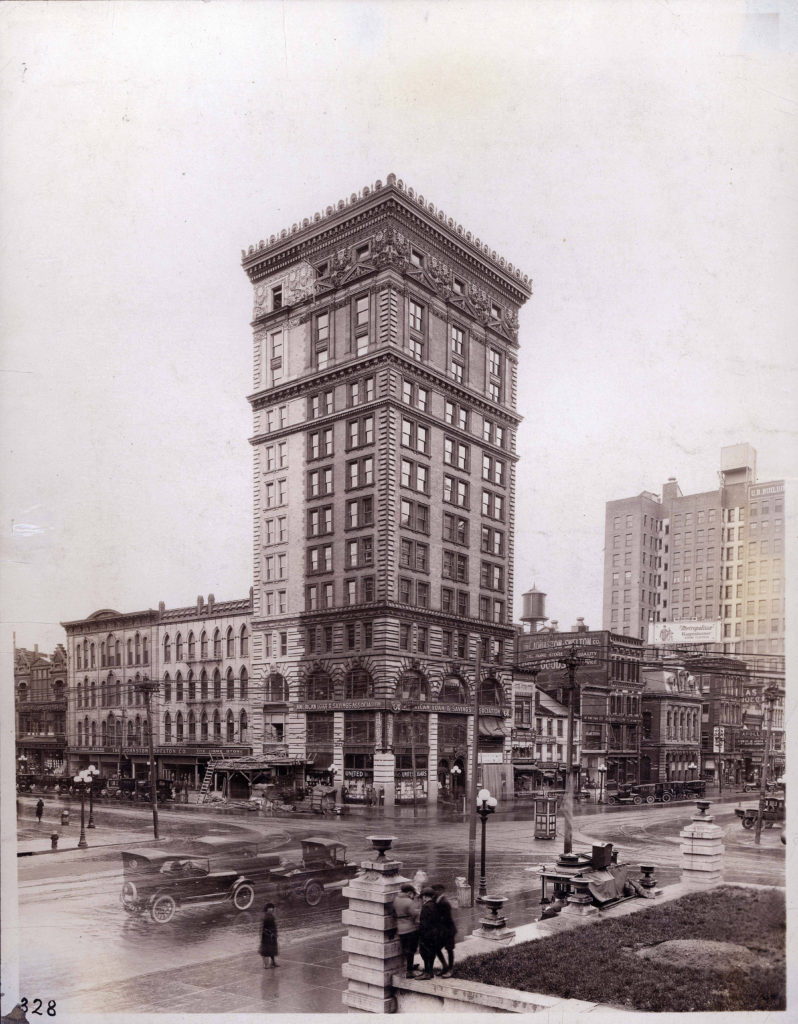
Lindsey Building
The Lindsey Building at 25 South Main Street was constructed in 1917 for its namesake Theodore C. Lindsey Jr. The building became home of the First Savings and Banking Company and Lindsey, an attorney, had an office on the top floor.
Lindsey was born in Dayton and graduated from Steele High School in 1897. Later he entered law school at the University of Cincinnati where his professors included President William Howard Taft. Lindsey’s reputation in Dayton grew as he established himself as a specialist in commercial and probate law.
Later the Lindsey Building fell vacant and languished for several decades, but it is currently being renovated as part of the Dayton Arcade redevelopment.
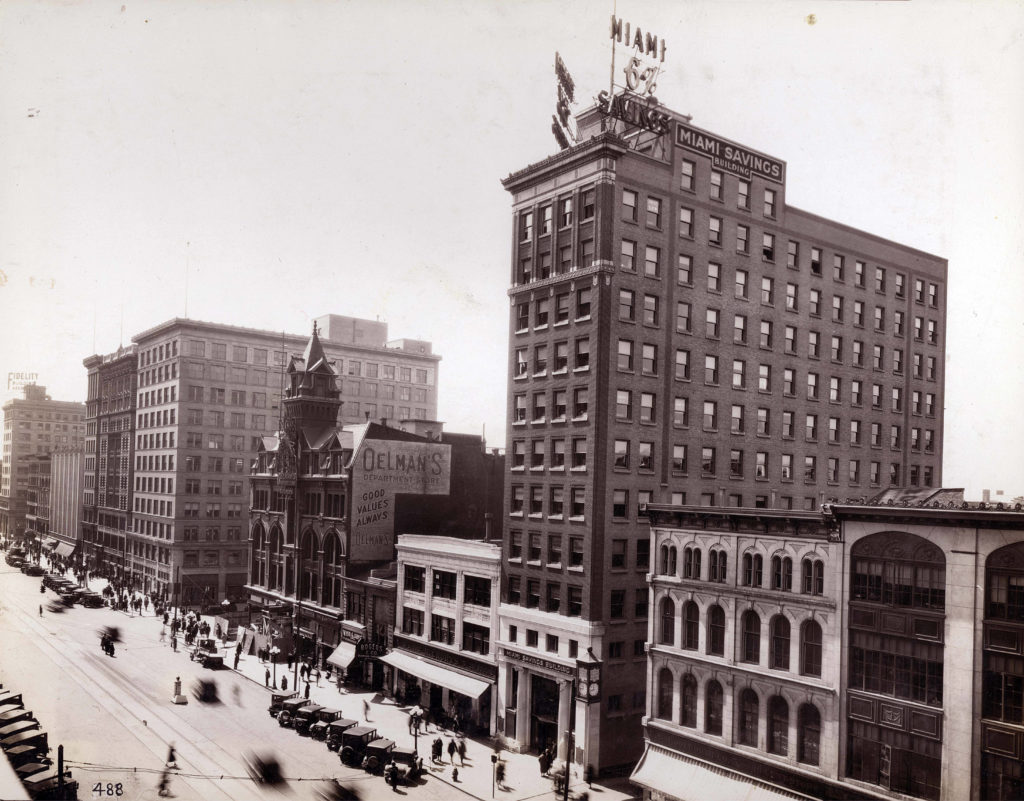
In addition to this article, I also cover some of these buildings in more detail in my book Lost Dayton, Ohio
Historic images are courtesy of Dayton Metro Library

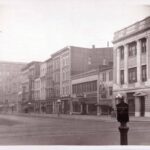
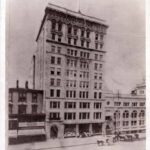
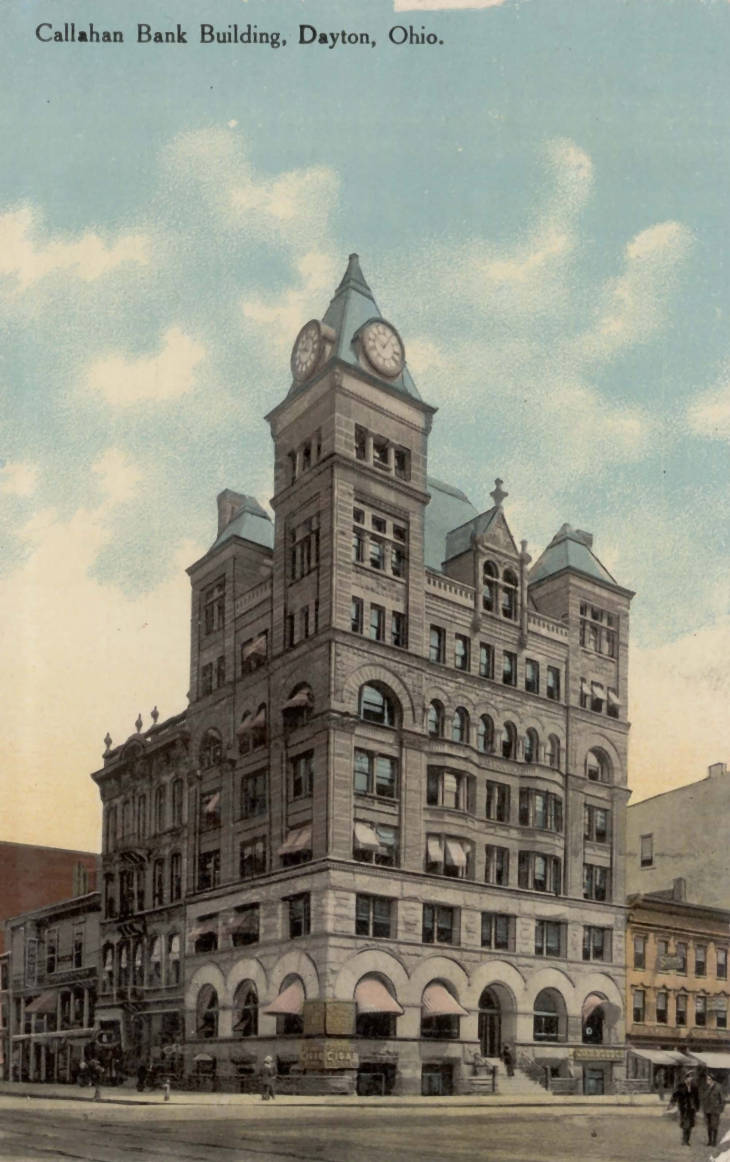
thank YOU thank YOU——great memories———-Bill Leakas———-Naples Fl